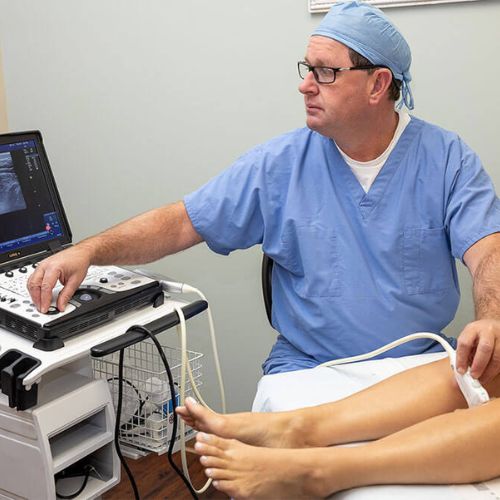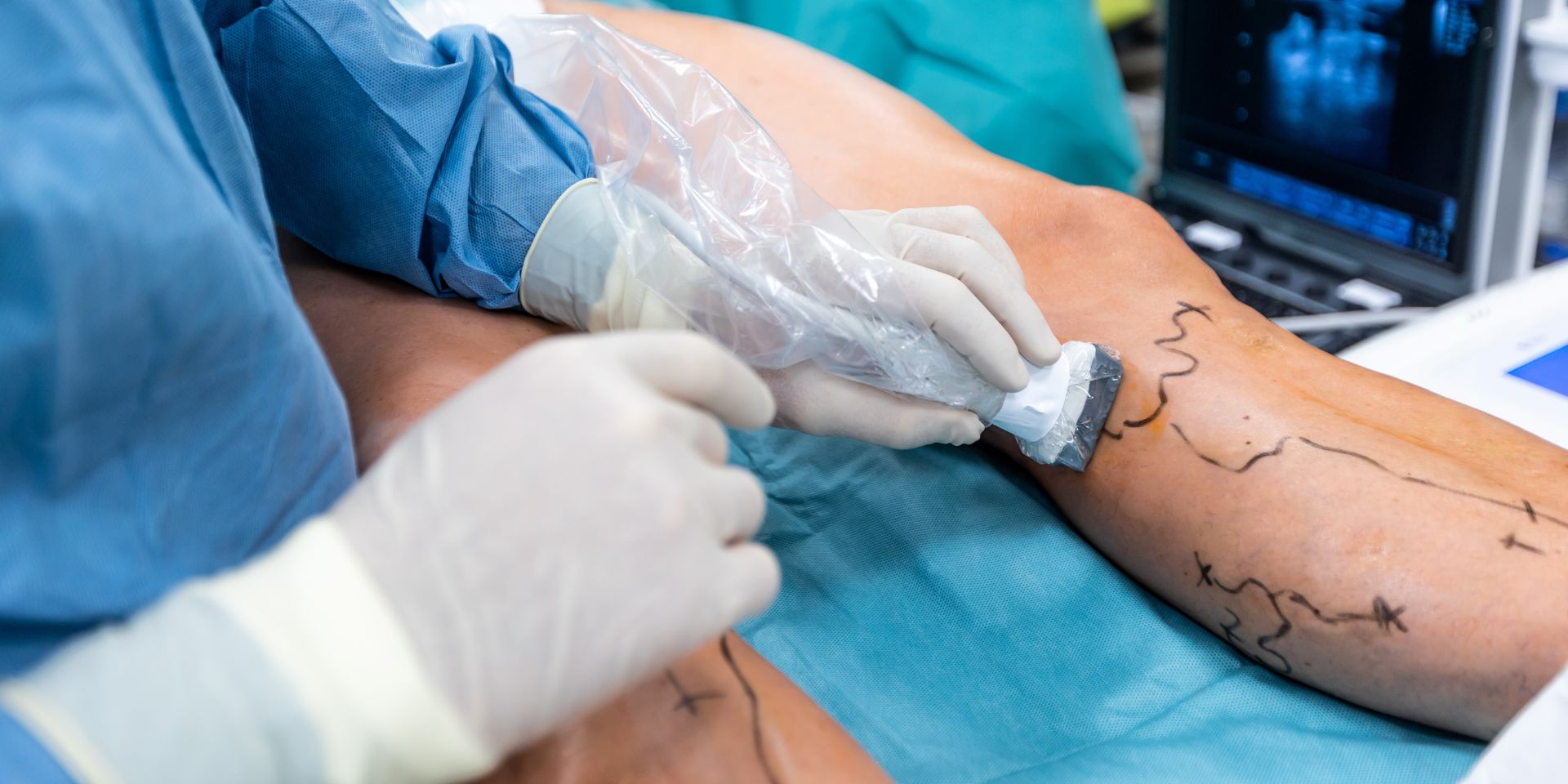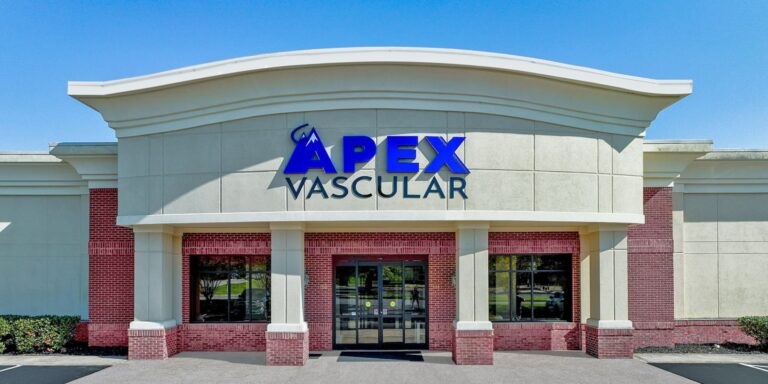Peripheral artery disease is a chronic circulatory condition involving reduced blood flow. This common yet often underdiagnosed disorder affects millions worldwide, increasing your risk of heart attack, stroke, and limb loss. In this blog, we’ll answer the question: “What is peripheral artery disease?” We’ll also explain how it’s diagnosed and its treatment options.
Peripheral artery disease is caused by narrowed arteries. Risk factors include smoking, diabetes, and high blood pressure. Treatment involves lifestyle changes, medications, and interventional procedures. APEX Vascular provides advanced surgical procedures and comprehensive, personalized care for effective long-term management and improved outcomes.
What is Peripheral Artery Disease?
Peripheral artery disease (PAD) is a chronic condition characterized by the narrowing or blockage of arteries that supply blood to the limbs, primarily the legs. This circulatory disorder is most commonly caused by atherosclerosis, where plaque builds up on the inner walls of arteries, reducing blood flow.
Risk factors for PAD include:
- Smoking (including secondhand smoke)
- Unhealthy eating habits
- Diabetes
- High blood pressure
- High cholesterol
- Obesity
- Lack of physical activity
- Chronic stress
PAD doesn’t cause symptoms until the plaque is large enough to significantly block blood circulation. As the disease progresses, symptoms may include:
- Leg pain when walking that improves with rest
- Leg fatigue or weakness
- One foot colder than the other
- Poor hair growth on one leg
- Shiny skin on one leg
- Non-healing sores on the lower leg
In severe cases, PAD can lead to gangrene and may require advanced wound care, minimally invasive procedures, bypass surgery, or medication for treatment. Early detection and treatment are crucial for managing PAD and preventing its serious complications.

How PAD is Diagnosed
A PAD diagnosis typically begins with a physical examination and medical history review. The most common diagnostic method is the ankle-brachial index (ABI) test, which compares blood pressure in the arms and ankles.
Other diagnostic tools include:
- Duplex ultrasonography
- CT angiography
- Magnetic resonance angiography
Early detection of PAD is crucial as it can prevent severe complications and improve treatment outcomes. It allows for timely intervention through lifestyle modifications, medication, or surgical procedures, potentially halting disease progression and reducing the risk of serious cardiovascular events.
Treatment for Peripheral Artery Disease
Lifestyle Modifications
Lifestyle changes are key in managing PAD. Quitting smoking is crucial, as it slows disease progression and improves cardiovascular health. This leads to better mobility and fewer invasive treatments.
Supervised exercise programs, especially structured walking regimens, can significantly improve symptoms and walking distance. A heart-healthy diet low in saturated fats and rich in fruits, vegetables, and whole grains helps manage risk factors like high cholesterol and hypertension, which contribute to PAD progression.
Medications
Medications play a crucial role in treating PAD by addressing underlying causes and reducing symptoms. Antihypertensives lower blood pressure, statins reduce cholesterol, and antiplatelets prevent blood clots. These drugs help manage risk factors, improve circulation, and reduce the risk of serious cardiovascular events.
Interventional procedures
Interventional procedures are also used to treat PAD, especially when lifestyle modifications and medications aren’t enough.
Angioplasty and stenting are minimally invasive techniques used to restore blood flow in narrowed or blocked arteries. During this common procedure, our vascular surgeons create a small opening, introduce a slender tube into a blood vessel, and navigate it toward the accumulated fatty deposits. They then deploy and expand a balloon from the tube, compressing the deposits against the vessel walls. A mesh-like support structure, previously encircling the balloon, remains in place to keep the vessel expanded.

In cases where the deposits are too rigid for balloon expansion, our surgeons employ an alternative technique. This method involves using a tube equipped with a mechanism that scrapes or pulverizes the hardened deposits.
Atherectomy is another minimally invasive procedure that uses specialized devices to remove plaque from arterial walls. This technique can be particularly useful for calcified lesions or in areas where stenting may be challenging.
Bypass surgery is a more invasive option, typically reserved for severe cases or when other interventions have failed. It involves creating a new route for blood flow around the blocked artery using a graft, which can be synthetic or from the patient’s own vein.
These interventional procedures aim to:
- Improve blood flow
- Alleviate symptoms
- Reduce the risk of complications
The choice of procedure depends on factors like disease severity, location, and patient characteristics. When you book a PAD appointment with APEX Vascular, our expert team will clearly explain your treatment options so you can make an informed medical decision.
The Importance of Comprehensive Care
Comprehensive care is crucial for peripheral artery disease, emphasizing a multidisciplinary approach and long-term management. Our team of specialists addresses every aspect of PAD management, from risk factor modification to advanced interventional procedures.
Long-term management and follow-ups are essential for patients since the condition requires ongoing monitoring and adjustment of treatment strategies. Regular assessments help track disease progression, evaluate treatment efficacy, and detect complications early.
This continuous care model:
- Improves patient outcomes
- Reduces the risk of major adverse events
- Enhances quality of life
Comprehensive care also incorporates patient education, lifestyle modifications, and psychological support. This addresses the complex needs of individuals living with PAD and promotes better overall health outcomes.
Why APEX Vascular is the Best Choice for PAD Treatment in Knoxville
APEX Vascular stands out as the premier choice for PAD treatment in Knoxville and East Tennessee. Our team of expert vascular specialists employs state-of-the-art technology and minimally invasive techniques to provide personalized care. We offer comprehensive services, from diagnosis to advanced interventional procedures, all under one roof.
Our commitment to patient education and ongoing research ensures you receive the most up-to-date treatments. With a focus on improving quality of life and preventing complications, our team delivers exceptional outcomes and compassionate care. Choose APEX Vascular for unparalleled expertise in managing peripheral artery disease and other vascular conditions.

Peripheral artery disease (PAD) results from narrowed arteries, mainly due to atherosclerosis. Risk factors include smoking, diabetes, and obesity. Treatment encompasses lifestyle modifications, medications, and interventional procedures. Comprehensive care, like that provided by APEX Vascular, is crucial for effective long-term management and improved outcomes in PAD patients.
APEX Vascular is a vascular surgery and vein center with locations in Knoxville, Lenoir City, Crossville, Decatur, and Harrogate, TN. We are dedicated to delivering personalized, high-quality care that goes beyond medical treatment. Our exceptional vascular staff, boasting extensive experience in vascular surgery, works tirelessly to elevate the standards of patient care and contribute to your overall well-being. Visit us online or call us at 865-562-3232 to request an appointment today!









